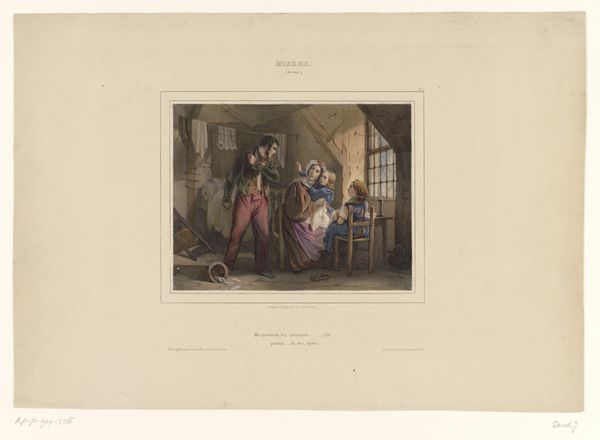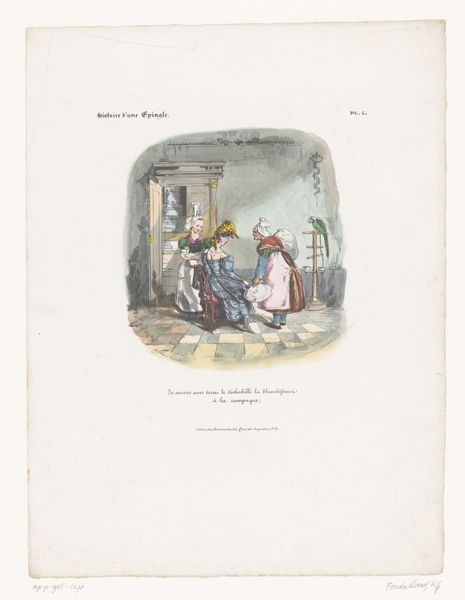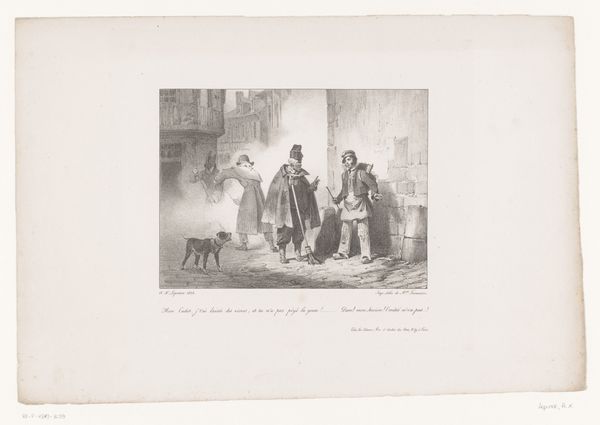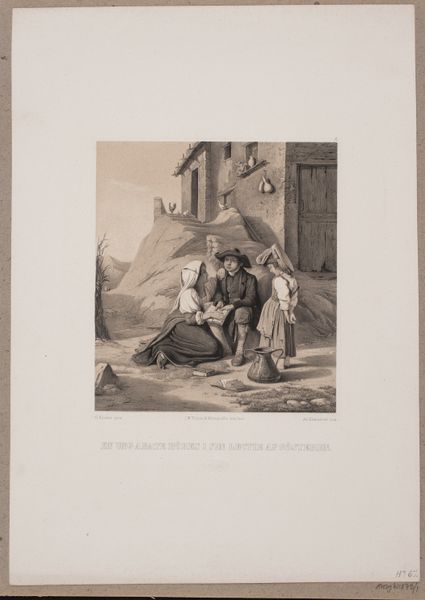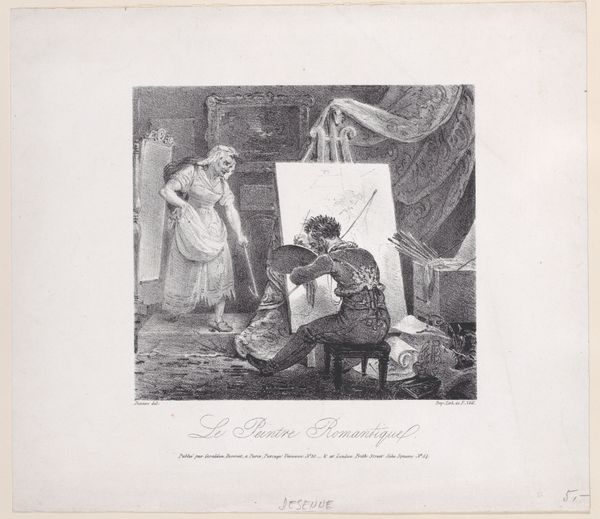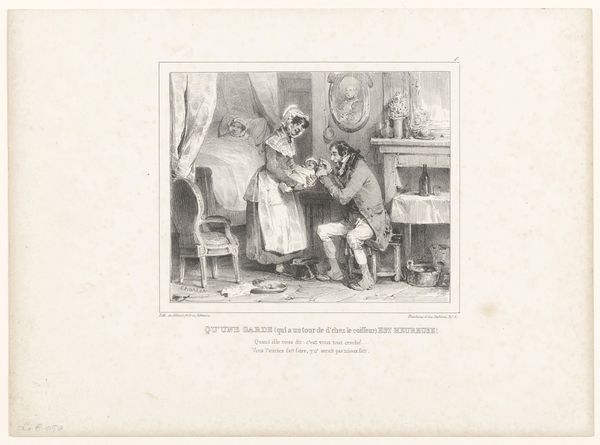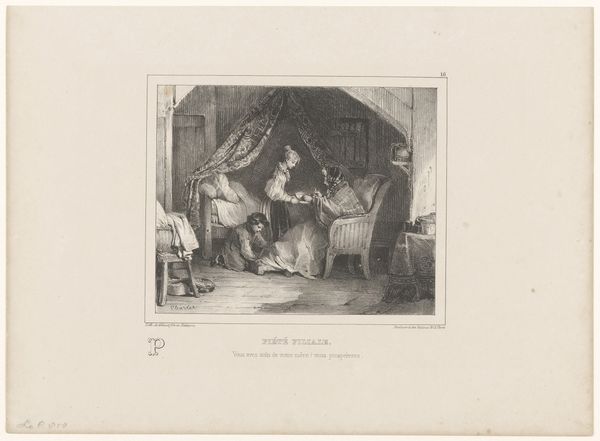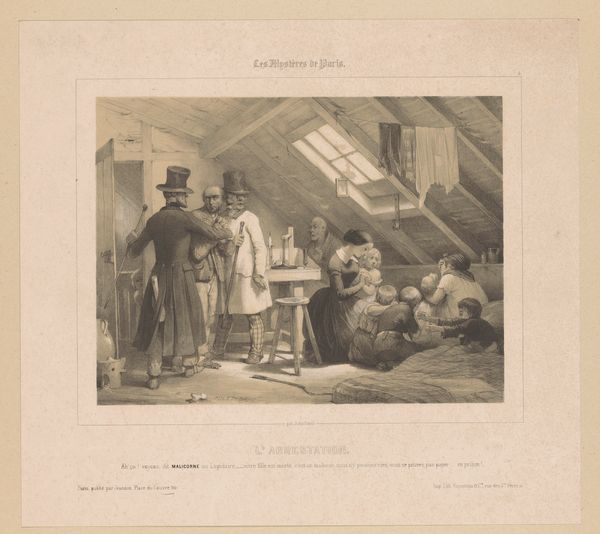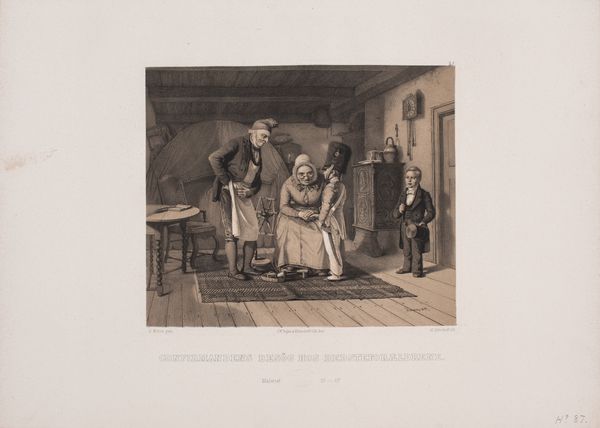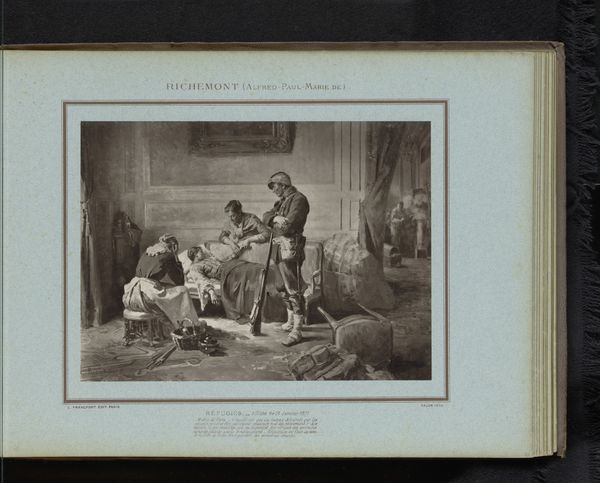
lithograph, print
#
picture layout
#
narrative-art
#
yellowing background
#
lithograph
# print
#
landscape
#
historical photography
#
romanticism
#
genre-painting
Dimensions: height 288 mm, width mm
Copyright: Rijks Museum: Open Domain
Curator: Looking at "Hunters Meet the Gamekeeper in the Morning," created sometime between 1831 and 1846, likely a lithograph based on the details. What's your initial take? Editor: The overall scene reads like a contained narrative frozen in time. The palette is soft, even muted, adding to a sense of stillness despite the apparent interaction between the figures. Curator: It definitely evokes a specific social atmosphere, doesn't it? Considering the era and the subject matter of hunters meeting with a gamekeeper, what potential power dynamics do you read into this? I can't help but see how class, and gender are subtly staged. Editor: Absolutely. I am particularly struck by how the central group seems entirely disconnected from the child and dog on the far left. Are we looking at divisions around rural labor? The child’s placement outside the central interaction, and possibly engaging in some form of commerce. How are we to consider their experiences within the framework of hunting privileges granted to the elite? Curator: Precisely! And observe how the narrative subtly centers around male figures, with their positions and postures indicating authority, perhaps reflecting Romantic-era constructions of masculinity intertwined with land ownership and the right to hunt. Editor: Hunting at that time was tied to privilege and class. Even something as seemingly mundane as encountering the gamekeeper becomes fraught when viewed through those lenses. Was this encounter truly a "meeting," or was it, in reality, an inspection or a demand for compliance, perpetuating imbalances in power? The uniforms, their bearing. They’re certainly not equals. Curator: It underscores the crucial role images play in reflecting and reinforcing societal structures. Editor: Definitely. It prompts critical dialogue on representation and visibility in art, allowing viewers to analyze how particular demographics were positioned within historical narratives and consider the perspectives that may have been omitted or suppressed. What initially appeared as a peaceful rural morning opens up a broader debate on societal inequities through an intersectional perspective. Curator: I agree. It's a small print, yet opens up such a large socio-political discussion. Editor: Indeed, highlighting the multilayered context of an artwork invites dialogue beyond just what we see on the surface.
Comments
No comments
Be the first to comment and join the conversation on the ultimate creative platform.
